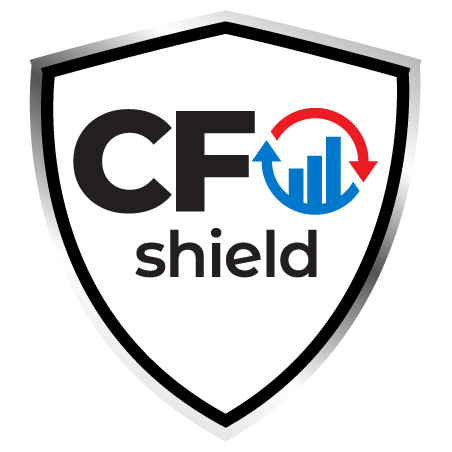
Credit risk, or the risk of customer payment default, is very important for all businesses, but it can be a matter of success or failure for a small business enterprise. A small business must manage their credit risk well in order to ensure their business can function. Credit risk is a key issue that has to be managed diligently in order to keep your business on the path towards growth and prosperity. Many small business owners ignore credit risks associated with building their business, as credit risk is often not an immediate concern, but it becomes one when there is a problem. It is very difficult to manage a perilous credit issue after the fact. Business owners need to proactively manage their credit risk in their business in order to be successful.
We will start our discussion with the 5 Cs of Credit, which are the 5 key criteria used as the basis for evaluating a credit decision and ensuring the decisions that are made are made to credit-worthy borrowers.
Character – Now commonly referred to as credit history; in real life, this is the payment history collected by credit bureaus and used by any lender. In the past, credit decisions were more personal, and character also included an evaluation of an applicant’s background. The underwriter would make a personal evaluation of the applicant’s character, i.e., did he or she believe you were an honest borrower.
Capacity – This is the ability to repay a loan. The credit professional evaluates the financial statement of a business and makes an assessment of the ability to repay the loan, when compared to current expense levels and existing debt payments.
Capital – This item gives the lender security for the loan and is based on the amount of capital a company invests. The higher the amount of capital invested, the lower the risk for the lender. This item is most commonly compared to a down payment a home buyer pays in order to purchase a home.
Collateral – Collateral gives the lender security for the loan and it can be crucial to helping a business secure financing. The ability for banks and other financial firms to lend money secured by collateral vary widely, but such “secured” loans often are key to securing a deal. Examples of collateral are Accounts Receivable, Inventory, Real Estate, Equipment, etc.
Condition – This criteria allows the lender to define the terms of a loan. The interest rate, the term, the amount borrowed (principal), etc., are very important elements to the borrower, while the lender conditions can include the reason the loan is being made, i.e., for a real estate or equipment purchase.
Creating a credit decision making process that follows the 5 Cs of Credit will help to ensure your firm lends to credit worthy customers and you can sleep better at night.
How do we apply the 5 Cs of Credit to managing credit risk? Listed below are 5 key takeaways that small business owners should focus on.
- Don’t exclusively focus on new customers. Most bad debts come from existing customer relationships. While it is extremely important to make sure you evaluate all new customers, it is crucial for small business to develop an ongoing credit evaluation process to monitor your existing customers. Prompt action in managing a credit issue with a client may alleviate the situation before it becomes critical.
- Trust your tools. It is important for you to decide which credit tools are best for your business, and then use them to monitor your customers and take action when necessary. You should evaluate the available tools carefully and choose the ones best suited for your business.
- As a business owner, it is up to you to create a culture of respect and ownership with your employees. Often there are conflicts between credit and sales, but if you have a workforce that feels valued, it will help to ensure they treat every loss as their loss. If you create this culture, you will have a major advantage in that loyal employees will tell you when you need to take action with a risky client.
- Apply risk management practices to avoid fraud. Establish a formal credit policy that requires the decision maker to follow the 5 Cs, and ensure you have requirements for minimum paperwork required for all credit decisions, i.e., credit application, credit reports, trade references, etc. Make sure all the steps in your credit process are followed before an affirmative credit decision is made, i.e., credit lines above a certain amount should be approved by more than one person.
- Focus on managing risk, not avoiding it. Unfortunately, there is no efficient way to totally eliminate credit risk. Each business owner needs to create a balance between risk and profitability to serve their own unique operation.
What tools are available to help avoid risk?
Credit Insurance can be purchased to help mitigate risk, but the costs are not always affordable. However, it can be an important tool to help manage the financial risk. Different levels of insurance are available, and there are even programs that can be deployed that will direct the payment of premium to the customer.
The National Association of Credit Management (NACM) is an advocate for business credit and financial management professionals. NACM and its network of partners take great pride in being the primary learning, knowledge, networking and information resource for commercial creditors nationwide (https://nacm.org). NACM is a great source of credit information that can benefit a business seeking to manage their credit risk.
Credit Bureaus are the source of financial information, both personal and business. In order to access this credit information, you will need to obtain a subscription from a credit bureau. There are several to choose from, and your decision could be based on which one best suits your company’s particular needs. Many bureaus even have industry specialties that can be beneficial to access if your company operates in a particular industry.
A good Attorney is indispensable to any business owner. He or she can help you establish good credit practices by setting up your credit terms, personal guarantees, cross corporate guarantees, and other legal documentation that can help ensure your debts are collectible. Additionally, they are important partners to have in your corner when times get tight and you need to take action in order to collect a debt. It is amazing what a well written demand letter issued by an attorney can accomplish.
Your risk management goal needs to be managing credit risk, not to eliminate it. The costs of eliminating credit risk will grow exponentially and will end up exceeding the benefit of eliminating credit risk. Using the 5 Cs to make a decision will give you the best chance to ensure that you do business with credit worthy customers. We have to remember that Revenue is Vanity and Cash is King. If a customer is not able or willing to pay, your business will suffer a loss that will be hard to overcome.
A fractional CFO can be a vital source in helping small business owners measure credit risk and establish a balance between profitability and the risk a business is willing to take. CFO Shield in the business of helping small business to understand the market place, create the strategic plan, execute that plan, and achieve the prosperity that is your goal. We leverage our offerings and enable small businesses to solve problems and share in the same economies of scale that larger companies enjoy. We have the experience needed to create customer-centric solutions to help small business owners better manage their back office and help them formulate strategies to adequately manage working capital, thereby ensuring stability and prosperity.
To find out more, visit CFOShield.com.

